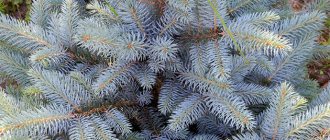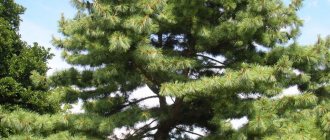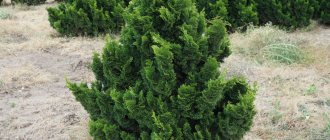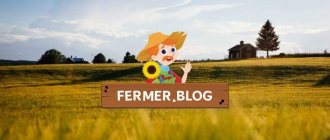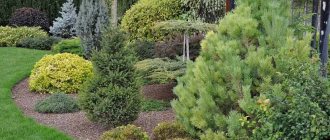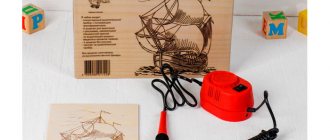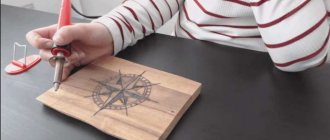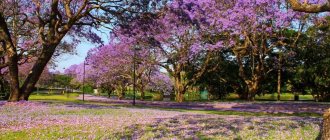Prickly spruce or blue spruce is one of the most beautiful coniferous trees. Such spruce trees add solemn rigor to the garden and refresh the urban landscape. The botanical name Picea pungens is translated from Latin as “gray spruce.” The color of the needles depends on the bluish waxy coating, which gives it a matte silver-blue hue. Fluffy branches with prickly needles shimmer in the sun and descend to the very ground. The pine cones frozen on the branches make the tree look impressive.
Interesting facts about blue spruce
The plant was brought to Russia in 1858 from North America and planted in the Nikitsky Garden. Blue spruce is resistant to gusty winds and low temperatures. In terms of quantity, it predominates in the mountainous areas of the Western Hemisphere of the Globe.
Diseases and pests
Like most blue spruces, blue spruce is not highly resistant to diseases and pests. Most of them can cause the death of the plant or loss of its decorative properties.
For preventive purposes, it is recommended to regularly inspect the plant for signs of disease or the presence of pests. If they are found, then treat the affected parts of the plant with the appropriate preparation as soon as possible.
Methods of propagation of blue spruce
Cuttings are considered the most effective way to transfer specified properties and characteristics to a young tree. The breeding period begins with preparations. To obtain good, healthy trees with blue needles, spruce specimens aged from 4 to 10 years are selected. In this case, the cuttings root by almost 80%.
Shoots taken from old trees, the roots produce only half of the cuttings. Attention, the branches for germination from the tree are selected by selection.
- It is necessary to give preference to harvesting side shoots growing on branches of the second or third order.
- It is better to start the harvesting process in the spring, at above-zero air temperatures, when buds are actively opening and there is abundant sap flow.
- From the long-term practice of agriculturalists, it is clear that such cuttings can produce small roots in two and a half months.
- After six months, the roots increase in volume to 20 cm, acquire elasticity and density, but do not yet become resistant to low temperatures.
Twigs taken from trees in the summer may not give a positive result and may not have time to take root in a short period of time due to the prevalence of high temperatures, which is often accompanied by drying out of the soil and roots. Cuttings in the autumn should be transferred to warm conditions, for example, greenhouses.
The soil must be moistened and loosened before planting. To create an optimal temperature, the ground is first covered with plastic film.
The predominance of favorable conditions allows the plant to grow faster. At the same time, the ideal ambient atmosphere should be 11-18 degrees in the air, at night - at least -24 degrees, soil from 15-20 degrees.
Features of care
Tree seedlings are picky about care. Without proper attention, they may begin to wither and die. To avoid this, you must follow a number of rules :
- Soil care. In the process of loosening the soil and getting rid of weeds, you should not go deeper than 7 cm, otherwise the roots of the spruce may be damaged. Some gardeners advise, if possible, not to disturb the tree at all, allowing it to grow in the grass. Adult spruce trees do not need fertilizers; seedlings need mineral supplements.
- Watering. In dry weather, young trees are watered once a week, one bucket at a time. Their roots are close to the surface, so the soil should not dry out. To better retain moisture, the soil is mulched. Plants benefit from spraying.
- Crown formation. Spruce is often used as a hedge. In this case, pruning is performed. It is necessary to start the procedure after the end of the annual growth, when the young needles have straightened. Shoots protruding beyond the boundaries of the required shape are pinched and carefully “twisted”. Next season these branches will grow sideways. Pruning also improves the shape of the top. The top of the spruce can be double or even triple; the excess ends are pinched for a more aesthetic appearance.
- Preparing for winter. In the cold season, young spruce trees can break under the weight of snow. To avoid this, in the fall their branches are pulled to the trunk and secured with a rope or net. Sunburn causes severe damage to the plant. The southern side of the tree may turn yellow and crumble. For protection, seedlings in the first years of life are covered for the winter with agrofibre or cotton fabric.
Rules for planting blue spruce
To increase sap flow in the system, plants can be watered with warm water. Before seedlings, it is necessary to lay a drainage layer of fine crushed stone in a layer of up to 5 cm at the bottom of the trench of the box, a grain layer of soil should reach at least 10 cm, peat mixed with sand 1:3, cuttings are planted in cloudy weather.
Before planting cuttings, it is recommended to disinfect them by adding a small amount of manganese to the water until a pinkish tint is obtained.
- Before being added to the soil, the branches are actively treated with a preparation that stimulates root formation.
- There are a large number of products designed to stimulate the growth of connective tissue, but preference is given to Kornevin.
- Similar preparations contain phytohormones that activate sap flow and root formation.
- If you skip an important step, the process can take up to several months.
It is important to leave a piece of bark on the branch, then the process of transforming the system will happen much faster.
Common varieties
There are several dozen varieties, each of which is distributed in a certain area of the globe and finds its application in various industries. Below we will look at the most popular varieties of spruce.
- Picea pungens hermann naue or prickly Hermann Naue is a beautiful decorative species of dwarf blue spruce. This species has become widespread, primarily due to its unusual cones. The cones appear even on young shoots and are initially red in color, which later turns into brownish-cream. The needles, like all representatives of this species, are gray-blue, and the size of the plant reaches 60 cm in length and 80 cm in width.
- Picea pungens nimetz, known like the prickly Nimetz, is another blue coniferous plant of a dwarf variety, whose height does not exceed 0.8 m. This type of spruce has a very pronounced crown, because the ends of the needles have white growth. This growth gives the bush an unusual appearance, as if there is snow on the tree all year round. This blue bush is extraordinary and quite strange, like the spiny green spruce Virgata.
- Picea pungens glauca prostrata (spiny Glauca Prostrata) is a rare, and due to this, a very desirable variety. It is the unusual shape that makes the tree a real decoration of every garden. It is short-growing: adult specimens grow up to 1 m in height, and the trunk diameter is about 1 m.
- Picea pungens f. glauca (gray spruce) - has blue-green needles and a symmetrically triangular crown. It grows to impressive sizes, up to approximately 10-15 m, and the trunk diameter can increase to 7 m. This variety is often used both for single planting and for planting entire tracts. Very often can be found along alleys and streets.
- Silver prickly spruce differs from all other varieties not only in its slenderness, but also in its resistance to air pollution and heavy snow accumulation. The silvery look remains decorative at any time of the year. The maximum possible life span of such a spruce is 100 years. During this time, it manages to grow up to 20-25 m in length; prickly silver spruce trees with a height of 40 m are also found in nature.
- Picea pungens Erich Frahm is one of the most demanding and light-loving varieties, but despite this it takes root very well in places with high air pollution. Individual branches have a serpentine shape and reach all the way to the ground. The height of an adult tree of this variety can reach 10 m.
In addition to the varieties described above, there are also a huge number of interesting specimens.
Varieties and characteristics of blue spruce
| Spruce variety | Peculiarities |
| Picea pungens Montgomery | When young it is spherical in shape and loves sun and well-drained soil. |
| Picea pungens Sonia | Silver color and green growths, which gives the spruce a blue tint |
| Picea pungens Glauca Arizona (Arizona spruce) | The structure of the crown is tiered, with age the crown rises and exposes the trunk |
| Picea pungens Blue Trinket | It has a dense shape, the needles are very hard and prickly |
| Beatrees Olivia | Most often, it is the artificial look that is purchased, as it is great for celebrating the New Year. |
| Picea pungens Stanley Gold | It has a conical shape, the color of the needles is light yellow |
| Picea pungens Sun on the Sky | The needles are densely planted, short and very soft |
| Picea pungens Jozsa | For excellent growth, spruce requires partial shade, excellent for growing in small gardens |
| Picea pungens Baby Blue Eyes | It grows slowly, the crown is symmetrical, the needles are thick and have a silver tint. |
| Picea pungens Cuba | A very rare variety, considered a collectible, has a dwarf shape |
| Spiny Retoflexa | Undemanding, grows in any conditions and soil, loves light |
| Picea pungens Omega | Responds well to fertilizing; it is important to plant in bright places, in fertile soil. |
| Picea pungens schovenhorst | Does not tolerate salty soil well, is an ornamental species, does not like excessive moisture |
| Picea pungens blue mountain | It grows slowly, in wild conditions it can live for about 500 years, but in urban conditions it ages already at 100 years of age. |
How to plant
The branches are planted in open ground or in greenhouses at an angle of 30 degrees. The depth should be no more than 1 cm, and the distance between plants should be 5 cm.
The soil must first be compacted, moistened, and after planting covered with a layer of light, air- and moisture-permeable fabric, for example, gauze or cotton.
Tips for choosing
Before choosing a variety, the gardener needs to study the prospects of an adult plant and decide how suitable the variety is for a particular garden plot. Perhaps you should take into account not only the size of the future tree, but also its external features and combination with other garden plantings.
So, varieties Nidiformis, Little Gem , and Canadian spruce are suitable for rock gardens. For container growing, experienced gardeners recommend choosing Canadian varieties, as well as types of common spruce. For small gardens and cottages for group or single plantings, you can choose Will's Zwerg, Pygmaea, Serbian spruce Nana. There are species that grow well on rocky hills, these include Formanek, Glauca Globosa, Nana.
In addition, when choosing a seedling, give preference to a specimen grown in a Russian nursery - it is more adapted for growing in our harsh conditions. The buyer should consider how much time he is willing to spend on maintaining the tree. For example, if the garden owner does not have time to wrap the plant at the end of winter to protect it from burns, then it is better to abandon some varieties of Canadian dwarf spruce.
Take into account the climatic conditions of the region. Most species are considered frost-resistant, and blue conifers also have high drought resistance compared to other varieties.
How to properly care for blue spruce
Cuttings need special care: watering with warm water, creating optimal ventilation. The main indicators for plant growth are humidity and heat.
For more precise control, you can purchase a hygrometer and thermometer. It is recommended to record the indicators daily in a special journal.
In the third year, the cuttings form a developed root system. Since the homeland of evergreen blue spruces is North America, a place where a warm climate prevails, the plants must be kept in a greenhouse in compliance with all growing conditions for 5 years.
- Remember that full growth of spruce requires a long process of care. It takes 10 years to reach 1 meter in height.
- Blue spruce grows exponentially, adding 10-15 cm annually; wax is responsible for the color of the needles - a substance that protects the needles from mechanical damage and environmental temperature influences, and also gives a delicate blue color to the needles of the evergreen tree.
Under favorable conditions, spruce secretes wax in large quantities, thickly covering the needles, making the green color on the needles invisible.
Origin story
The natural habitat of blue spruce is North America.
It is this area that can be considered the birthplace of blue spruce. In the natural environment, it grows at an altitude of 1700 - 3000 meters above sea level, mainly along mountain streams and rivers. Thanks to its unpretentiousness and resistance to frost, this tree can grow everywhere. It is successfully grown in many countries and cities in Europe and Asia. Today, thanks to the efforts of breeders, about 70 varieties of blue spruce are known. Interestingly, artificially bred varieties retain high frost resistance. This is quite unusual for hybrid tree species.
Propagation by seeds
It is better to collect seeds for subsequent seedlings in late autumn or early winter. In frost, when the cones open, the seeds are dispersed by the wind using an impeller.
Based on the results of research conducted by agronomists, we can conclude that of all the seeds planted, only 30% will be blue.
According to the color of their needles, spruce trees are divided into several types:
- Gray.
- Blue.
- Silver.
There are no clear boundaries for the appearance of the species; the result depends on the time of flowering, the temperature conditions of the environment where the tree grows and the amount of wax on the spruce needles.
Ornamental plants look elegant in the central squares of large cities, but the price for one powerful spruce is about 20,000 rubles. Today, more than a million cities are decorated with this delightful coniferous beauty.
But in order to achieve high results in growing a tree. It is necessary to put in a lot of work and painstaking work aimed at care and active growth.
Use in landscape design and meaning
On the territory of the Russian Federation, blue spruce is grown only as an ornamental plant. And such a tree is often cultivated indoors as a bonsai. This plant also thrives in urban environments, and it helps clean up polluted air.
This plant can be planted both in your garden or garden, and along the street. It will decorate them for many years. Among the many varieties of blue spruce, you can choose ones that are suitable for large areas or for small flower beds. This plant goes well with decorative stones or products.
Blue Spruce in the Countryside ✔️ How to Grow
Photos of blue spruce trees
Montgomery
A slow-growing variety with an annual growth of 5-6 cm. An adult spruce can grow up to 2-3 m with a diameter of up to 2 m. Silver-blue needles reach 20 mm in length, acquiring a more saturated blue color with age. Young plants are characterized by a spherical crown shape, which over time stretches vertically and becomes a wide cone, sometimes several crowns are formed. You can get it thicker and give it the desired shape through regular haircuts, which is recommended until mid-summer. Montgomery is a shade-tolerant coniferous plant, but in a sunny place you can achieve a denser crown and a brighter color of young needles.
